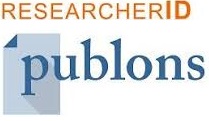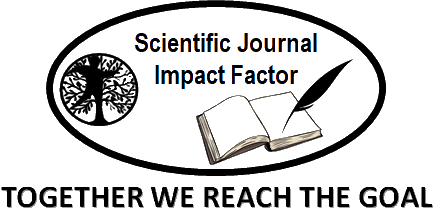Study Of Potential Earthquake Vulnerability In Serang City, Banten Based On Seismic Vulnerability Index And Ground Shear Strain Values
Yasmin Haifa, Udi Harmoko, Muhammad Irham Nurwidyanto, Ulfa Nur Silvia, Oriza Sativa, Sigit Pramono
Abstract
The population of Banten Province's Serang City is growing at a pace of 2.59% annually, which raises the need for infrastructure development and urban expansion. However, the city is in a high-risk seismic zone due to its geological location within the Sunda Strait region, which is situated between the Indo-Australian and Eurasian Plates. Assessing the region's seismic vulnerability is crucial for risk reduction and disaster preparedness because the existence of active fault lines increases the likelihood of earthquake risks. Using the Horizontal to Vertical Spectral Ratio (HVSR) approach, which establishes crucial parameters including the ground shear strain (GSS) and seismic vulnerability index (Kg), this study seeks to assess Serang City's seismic susceptibility. 111 measurement sites were used in the study and the data was processed using Geopsy software to derive amplification (A₀) and natural frequency (f₀) values using the H/V spectral curve. To get precise seismic response characteristics, the data analysis procedure included horizontal component combining, spectrum smoothing, H/V ratio averaging, and Fast Fourier Transform (FFT) signal processing. Because of their geological makeup, which includes the Banten Tufa formation—a loose volcanic deposit known to magnify ground motion during earthquakes—Walantaka and Taktakan Districts are found to have high seismic sensitivity (>20 s²/cm). Furthermore, fault lines and coastal locations with Alluvium deposits have the highest ground shear strain (GSS) values, ranging from 1.66 × 10⁻⁶ to 1.83 × 10⁻⁴. This makes these areas particularly vulnerable to soil deformation caused by seismic activity. These findings highlight the need for stringent building regulations, earthquake-resistant infrastructure, and efficient urban planning in order to lower Serang City's seismic risk. The study's conclusions give politicians, urban planners, and disaster management authorities crucial information that makes it easier to create focused mitigation plans that would improve infrastructure resilience and public safety in the event of future earthquakes.
Keywords
HVSR; Earthquake; Serang; Seismic Vulnerability Index; Ground Shear Strain
References
National Disaster Management Agency (BNPB), IRBI Indeks Risiko Bencana Indonesia Tahun 2023. Jakarta: BNPB, 2023.
Y. Nakamura, “Clear Identification of Fundamental Idea of Nakamura’s Technique and Its Application.” Japan: Tokyo University, 2000.
SESAME, Guidelines for the Implementation of the H/V Spectral Ratio Technique on Ambient Vibrations. Europe: SESAME European research project, 2004.
S. Arifin, B.S. Marjiyono, and R. Setianegara, “Penentuan Zona Rawan Guncangan Bencana Gempa Bumi Berdasarkan Analisis Nilai Amplifikasi HVSR Mikrotremor Dan Analisis Periode Dominan Daerah Liwa Dan Sekitarnya,” in Jurnal Geofisika Eksplorasi, vol. 2, 2014, pp. 30-40.
Y. Nakamura, “Seismic Vulnerability Indices for Ground and Structures Using Microtremor,” in World Congress on Railway Research. Florence, 1997.
United States Geological Survey, The Modified Mercalli Intensity Scale. US Geological Survey, 2024.
DOI:
http://dx.doi.org/10.52155/ijpsat.v50.2.7217
Refbacks
- There are currently no refbacks.
Copyright (c) 2025 Yasmin Haifa, Udi Harmoko, Muhammad Irham Nurwidyanto

This work is licensed under a
Creative Commons Attribution 4.0 International License.





















